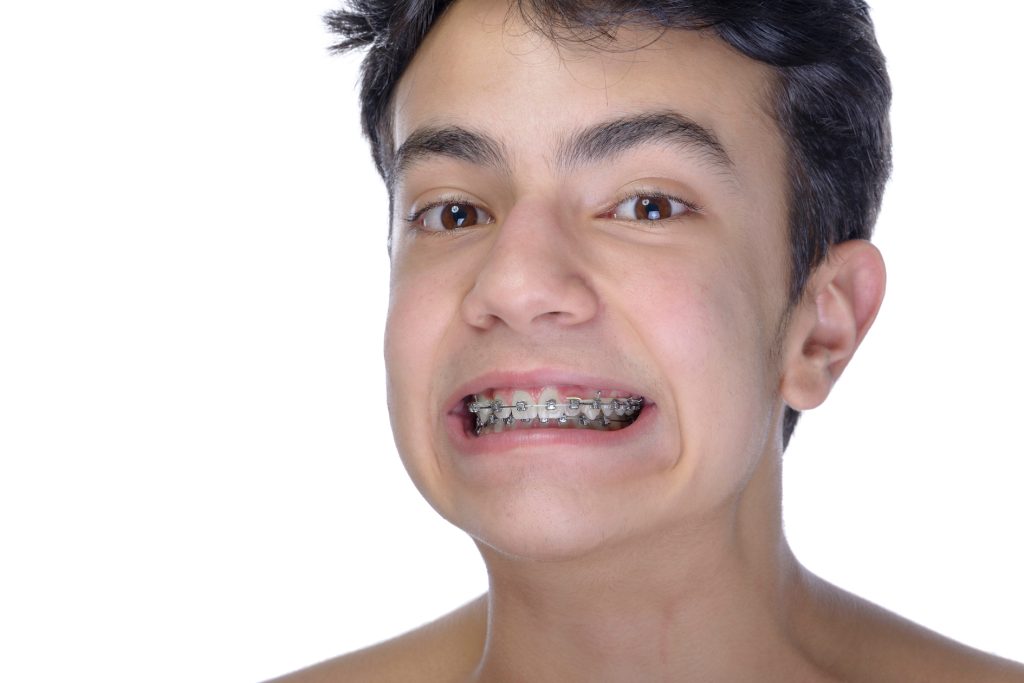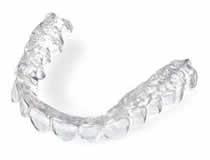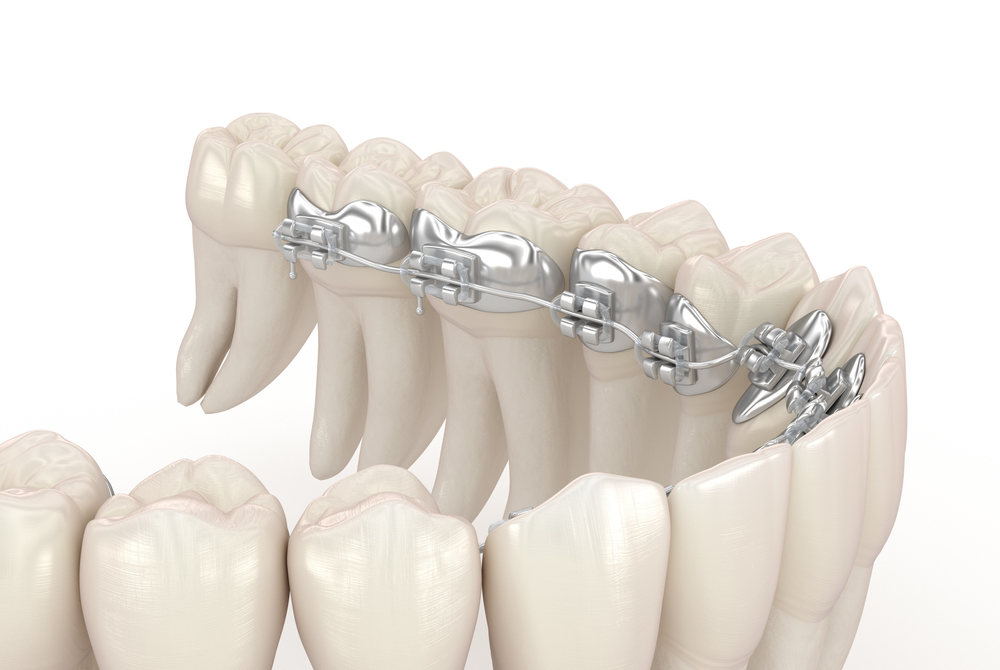Braces: Get the story straight
Featured Products Promotional FeaturesPosted by: Dental Design 25th July 2023

Whenever a patient thinks about improving their dental appearance, chances are they’ll think of braces to straighten their teeth. Sometimes called ‘train track’ braces by the general population, they’re a common presentation of dental treatment in popular culture.
Solutions have developed over time, but their presence in dentistry remains. Often reliable in achieving the best results for patients with moderate to complex malocclusions, fixed braces are renowned as an effective treatment.
Children and the relationship with braces
 Children are regularly open to fixed brace treatment, with aesthetics as a prevailing motivation – and concern.[i] Whilst children with braces can experience teasing and bullying, there is a perceived normalisation amongst young people to have fixed braces. They are likely to see friends and family with braces, and a higher presence in social experiences and influences within day-today life and media could increase openness to the treatment.[ii]
Children are regularly open to fixed brace treatment, with aesthetics as a prevailing motivation – and concern.[i] Whilst children with braces can experience teasing and bullying, there is a perceived normalisation amongst young people to have fixed braces. They are likely to see friends and family with braces, and a higher presence in social experiences and influences within day-today life and media could increase openness to the treatment.[ii]
Orthodontic treatment at an early age is not only for aesthetic benefit, but is, of course, designed to prevent future dental problems.[iii] Evidence suggests that measures including fixed braces for young people improve their dental quality of life (QoL).[iv] Dependent on the diagnosis, fixed braces could prevent periodontic, speech, and confidence issues, as well as pain related to temporomandibular joint dysfunction (TMD) later in life.[v]
Braces for Adults
 There has been an increase in adult patients seeking orthodontic care over the past few years.[vi] Many adults prioritise aesthetic and practical considerations for their treatment, though, meaning they tend to reach for clear aligners[vii] and lingual braces[viii] over the conventional fixed brace.
There has been an increase in adult patients seeking orthodontic care over the past few years.[vi] Many adults prioritise aesthetic and practical considerations for their treatment, though, meaning they tend to reach for clear aligners[vii] and lingual braces[viii] over the conventional fixed brace.
However, removeable aligner treatment is regularly only a viable option for simple to moderate malocclusions.[ix] Adults with a more serious issue will appreciate the level of impact a fixed brace can have compared to a clear aligner on their treatment outcomes and long-term oral health. A fixed brace is more effective and reliable when controlling occlusal contacts and producing a result that lasts.[x] Patients that have received fixed orthodontic treatment have significant increases in self-esteem following treatment,[xi] which is the target for anyone.
Discussing a patient’s motivations and intentions for outcomes is important in any case, and this may be easier with a figure they have already received care from. Adult patients will also prioritise receiving treatment from a figure they trust.[xii]
When is a fixed brace appropriate?
Dental crowding and spacing can affect patients throughout life, aesthetically and functionally. QoL is negatively impacted in adolescents who suffer issues of crowding,[xiii] and predictably the same applies for the QoL and self-esteem of adults with similar malocclusions.[xiv] Many adolescents are bullied and teased because of the aesthetic results of dental spacing,[xv] and a spaced dentition can have an effect on speech throughout life,[xvi] which can affect communication and confidence.
Speech complications are also prevalent in patients with issues such as an open bite, often finding the letter “s” difficult to pronounce. [xvii] The impact this has one a person’s social confidence, alongside other functional difficulties, can mean patients with malocclusions such as this face a negative impact to their QoL. [xviii]
All of these issues can be aided by fixed orthodontics, moving the teeth into more desirable positions.
Timing the introduction of fixed braces for children or adolescents should be judged on a case-by-case basis, but treatment is typically provided in the late mixed or early permanent dentitions.[xix] This takes full advantage of this period of extreme growth in a child’s jaw, and minimises issues as teeth continue to move over time. [xx] Adults can treat orthodontic issues when they immediately arise, or when it works best them, since timing treatment alongside growth is no longer an important factor.
Dentists should treat each case uniquely, understanding the effects fixed braces and other treatments can have on aesthetic and functional results. It is also important to recognise the value of referral in cases that need it to provide the appropriate care for a patient.
Clinicians who are looking to broaden their expertise on fixed braces should undertake appropriate training and qualifications. During the Fixed Braces course provided by the IAS Academy, clinicians who are beginners to fixed appliances can broaden their depth of knowledge from diagnosis and case evaluation, to fitting and retention. The experienced lecturers provide expansive training and you can receive case-by-case mentoring for life, allowing you to grow within a dependable support network.Fixed braces are a mainstay in orthodontic care. A reliable option for children, adolescents, and adults, they help dentists continue to provide brilliant smiles every day.

For more information on upcoming IAS Academy training courses,
please visit www.iasortho.com or call 01932 336470 (Press 1)
[i] Geoghegan, F., Birjandi, A. A., Machado Xavier, G., & DiBiase, A. T. (2019). Motivation, expectations and understanding of patients and their parents seeking orthodontic treatment in specialist practice. Journal of orthodontics, 46(1), 46-50.
[ii] Trulsson, U., Strandmark, M., Mohlin, B., & Berggren, U. (2002). A qualitative study of teenagers’ decisions to undergo orthodontic treatment with fixed appliance. Journal of orthodontics, 29(3), 197-204.
[iii] Williams, A. C., Shah, H., Sandy, J. R., & Travess, H. C. (2005). Patients’ motivations for treatment and their experiences of orthodontic preparation for orthognathic surgery. Journal of orthodontics, 32(3), 191-202.
[iv] Javidi, H., Vettore, M., & Benson, P. E. (2017). Does orthodontic treatment before the age of 18 years improve oral health-related quality of life? A systematic review and meta-analysis. American Journal of Orthodontics and Dentofacial Orthopedics, 151(4), 644-655.
[v] Agrawal, G. (2016). Deep bite its etiology, diagnosis and management: a review. Journal of Orthodontics, 2(4), 12.
[vi] BOS Admin, (2021, May 6). The ‘Zoom Boom’ BOS stats reveal a surge in demand for orthodontics during the pandemic. British Orthodontic Society. Available at: https://www.bos.org.uk/news-and-events/news [Accessed April 2023]
[vii] Saccomanno, S., Saran, S., Laganà, D., Mastrapasqua, R. F., & Grippaudo, C. (2022). Motivation, perception, and behavior of the adult orthodontic patient: a survey analysis. BioMed Research International, 2022.
[viii] Alansari, R. A., Faydhi, D. A., Ashour, B. S., Alsaggaf, D. H., Shuman, M. T., Ghoneim, S. H., … & Dause, R. R. (2019). Adult perceptions of different orthodontic appliances. Patient preference and adherence, 2119-2128.
[ix] Phan, X., & Ling, P. H. (2007). Clinical limitations of Invisalign. Journal of the Canadian Dental Association, 73(3).
[x] Ke, Y., Zhu, Y., & Zhu, M. (2019). A comparison of treatment effectiveness between clear aligner and fixed appliance therapies. BMC Oral Health, 19(1), 1-10.
[xi] Johal, A., Alyaqoobi, I., Patel, R., & Cox, S. (2015). The impact of orthodontic treatment on quality of life and self-esteem in adult patients. European journal of orthodontics, 37(3), 233-237.
[xii] Fenton, G. D., Cazaly, M. H. M., Rolland, S. L., & Vernazza, C. R. (2022). Eliciting preferences for adult orthodontic treatment: a discrete choice experiment. JDR Clinical & Translational Research, 7(2), 118-126.
[xiii] O’Brien, C., Benson, P. E., & Marshman, Z. (2007). Evaluation of a quality of life measure for children with malocclusion. Journal of orthodontics, 34(3), 185-193.
[xiv] Jung, M. H. (2015). An evaluation of self-esteem and quality of life in orthodontic patients: Effects of crowding and protrusion. The Angle orthodontist, 85(5), 812-819.
[xv] Seehra, J., Fleming, P. S., Newton, T., & DiBiase, A. T. (2011). Bullying in orthodontic patients and its relationship to malocclusion, self-esteem and oral health-related quality of life. Journal of orthodontics, 38(4), 247-256.
[xvi] Kaya, D., & Taner, T. U. (2011). Management of an adult with spaced dentition, class III malocclusion and open-bite tendency. European journal of dentistry, 5(01), 121-129.
[xvii] Farronato, G., Giannini, L., Riva, R., Galbiati, G., & Maspero, C. (2012). Correlations between malocclusions and dyslalias. European Journal of Paediatric Dentistry, 13(1), 13-18.
[xviii] Feres, M. F. N., Abreu, L. G., Insabralde, N. M., Almeida, M. R. D., & Flores-Mir, C. (2016). Effectiveness of the open bite treatment in growing children and adolescents. A systematic review. European Journal of Orthodontics, 38(3), 237-250.
[xix] Fleming, P. S. (2017). Timing orthodontic treatment: early or late?. Australian dental journal, 62, 11-19.
[xx] de Oliveira, J. M. L., Dutra, A. L. T., Pereira, C. M., & de Toledo, O. A. (2011). Etiology and treatment of anterior open bite. Health Sci Inst J, 29, 92-95.








